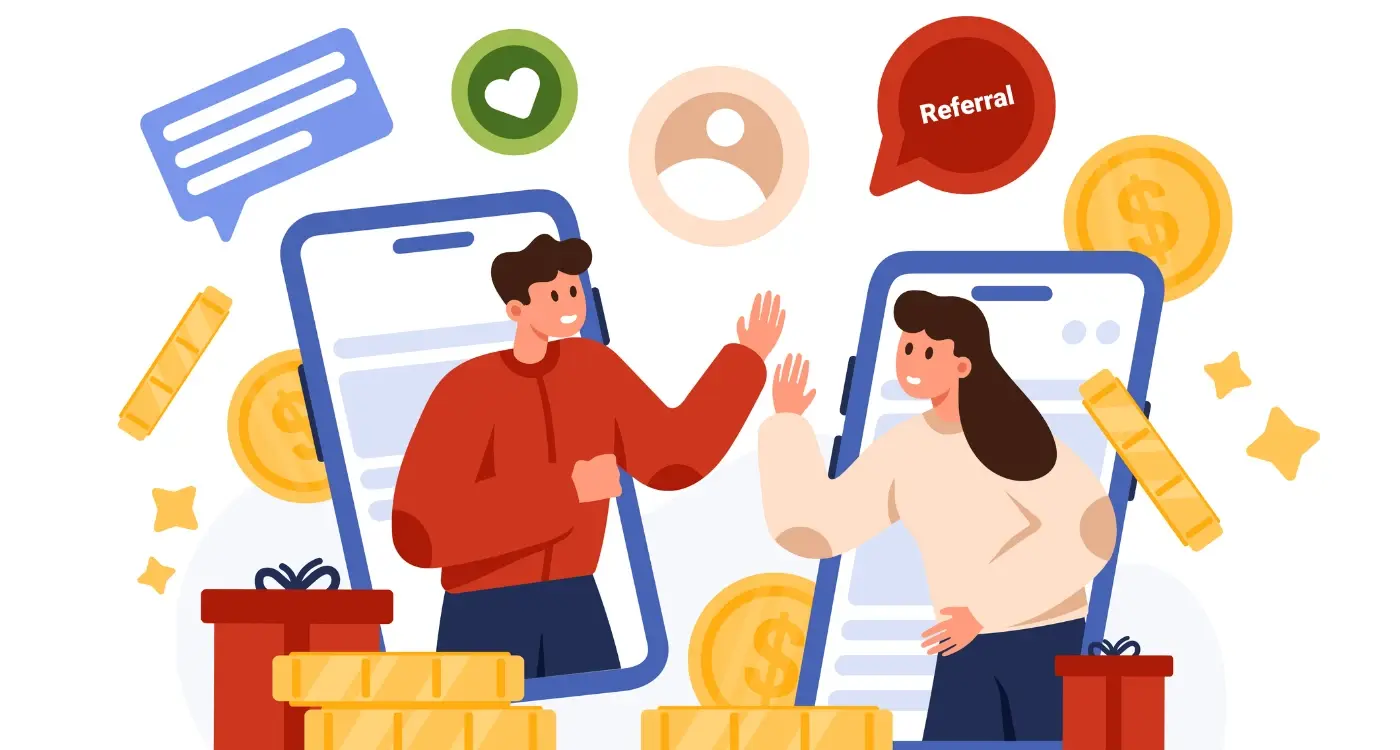How Do I Get Users To Leave Feedback About My App?
Here's a sobering truth: 96% of users never leave reviews for mobile apps they use regularly. That's right—nearly every person downloading your app will use it silently, offering no feedback about what works, what doesn't, or what could be better. This silent majority represents a massive missed opportunity for app developers who desperately need user insights to improve their products and attract new users.
Getting users to leave feedback isn't just about boosting your app store ratings (though that's certainly important). Reviews and user engagement are the lifeblood of successful mobile app growth. They tell potential users whether your app is worth downloading, help you identify bugs and improvements, and create a sense of community around your product. But here's the challenge—most users simply don't think to leave feedback unless something goes dramatically wrong.
The best time to ask for a review is when users are already having a positive experience with your app, not when they're frustrated or trying to leave
Throughout this guide, we'll explore proven strategies to encourage genuine feedback from your users. You'll learn when to ask, how to ask, and what to do once those reviews start coming in. The goal isn't to manipulate users into leaving fake positive reviews—it's about creating genuine opportunities for satisfied users to share their experiences while building stronger relationships with your app community.
Understanding Why App Feedback Matters
After working with hundreds of app developers over the years, I can tell you that feedback isn't just nice to have—it's absolutely critical for your app's survival. When users leave reviews and ratings, they're giving you two massive gifts: they're telling other potential users whether your app is worth downloading, and they're showing you exactly what needs fixing.
Think about your own behaviour for a moment. When you're browsing the App Store or Google Play, what's the first thing you look at after reading the app description? The ratings and reviews, right? You're not alone in this. Studies show that app store ratings directly impact download rates; apps with higher ratings get significantly more downloads than those with lower ones.
The Hidden Benefits of User Feedback
But here's what many developers miss—feedback does more than just attract new users. It helps you understand which features people actually use, what frustrates them, and what keeps them coming back. This information is gold dust for planning your next update.
- Identifies bugs you might have missed during testing
- Reveals which features users value most
- Shows you what's missing from your app
- Helps you prioritise development resources
- Builds a community around your app
The apps that succeed long-term are the ones that listen to their users and evolve accordingly. Without feedback, you're essentially building in the dark.
Making It Simple for Users to Leave Reviews
Right, let's talk about something that sounds obvious but gets messed up more often than you'd think—making it dead simple for people to actually leave reviews. I've worked on loads of mobile apps over the years and you'd be amazed how many brilliant apps shoot themselves in the foot by making the review process a complete nightmare.
The golden rule here is this: reduce friction at every possible step. When someone's had a good experience with your app and they're feeling generous enough to share their thoughts, don't make them jump through hoops to do it. A single tap should take them straight to the review section of the app store—no detours, no extra screens asking for their life story.
Keep the Process Lightning Fast
Most people change their minds quickly. If they have to navigate through multiple screens or sign up for yet another account just to leave feedback, they'll abandon the process faster than you can say "user engagement". Use the built-in review prompts that iOS and Android provide; they're there for a reason and they work brilliantly.
Position your review request button prominently but not intrusively—users should spot it easily without feeling like it's being shoved down their throats.
The best mobile app reviews come from users who barely noticed how easy the process was. That's your target.
Timing Your Review Requests Perfectly
Getting the timing right when asking for reviews can make or break your success rate. I've seen apps that asked for feedback at completely the wrong moment—right after a user downloaded the app, or worse, during a crash or error. It's like asking someone how their meal was before they've even taken a bite!
The sweet spot for review requests is after users have experienced genuine value from your app. This could be after they've completed their first successful task, reached a milestone, or had a particularly positive interaction. Think about when your users feel most satisfied—that's your golden moment.
Best Times to Ask for Reviews
- After completing a successful purchase or transaction
- Following the completion of a tutorial or onboarding process
- When users achieve a goal or unlock a feature
- After receiving positive feedback through in-app surveys
- During periods of high engagement or repeat usage
Avoid asking during stressful moments, immediately after errors, or when users are clearly frustrated. You want to catch them when they're feeling good about your app, not when they're ready to delete it. Space out your requests too—nobody wants to be pestered every time they open your app.
Building Trust Before Asking for Feedback
Trust doesn't happen overnight—and this is particularly true when it comes to mobile app reviews. You can't just launch an app and expect users to write glowing reviews straight away. They need to feel confident about your app first, and that means proving yourself through actions, not just promises.
The most effective way to build trust is by delivering on what you say your app will do. If you promise fast performance, make sure it loads quickly. If you claim it's user-friendly, ensure the interface is intuitive. When users see that your app consistently meets their expectations, they'll naturally develop confidence in your product.
Show You're Listening
Transparency goes a long way in establishing trust. Regular updates that fix bugs and add requested features show users you're actively improving their experience. A simple "What's New" section that clearly explains changes makes users feel valued and heard.
Users who trust your app are five times more likely to leave positive reviews than those who don't
Building trust takes time, but it's worth the investment. Users who feel secure using your mobile app won't hesitate to share their positive experiences with others. This organic user engagement creates a foundation for genuine, helpful reviews that actually influence potential downloads.
Using In-App Messages and Prompts Effectively
Getting the message right is just half the battle—where and how you show it makes all the difference. I've seen apps that bombard users with popup after popup, and frankly, it's annoying. Nobody wants to feel like they're being pestered every time they open an app.
The best in-app messages feel natural, almost like they belong there. Think about placing your feedback request on a confirmation screen after someone completes an action they're happy about. Just bought something? Perfect time. Finished a level in a game? Even better. The user is already in a positive mindset, so they're more likely to share that good feeling.
Making Your Message Stand Out
Your prompt doesn't need to be fancy, but it should be clear and friendly. A simple "Enjoying the app? We'd love a quick review!" works better than a lengthy explanation about why reviews matter to your business. Keep it short and sweet.
Animation can help draw attention, but don't go overboard. A gentle fade-in or slide-up works well—anything too flashy will feel like an advert. And always, always give users an easy way to dismiss the message if they're not interested. Respect their choice and they'll respect your app.
Responding to Reviews the Right Way
Getting reviews is just the beginning—what you do with them makes all the difference. I've watched countless mobile app developers celebrate when reviews start rolling in, only to completely ignore them afterwards. Big mistake! Your response to user feedback can turn a frustrated reviewer into a loyal advocate, or it can make things much worse.
When someone leaves a negative review, your first instinct might be to defend your app or explain why they're wrong. Don't do it. Take a deep breath and respond professionally. Thank them for their feedback, acknowledge their concern, and explain what you're doing to fix it. This shows other potential users that you care about their experience and actively work to improve your mobile app.
Always respond to reviews within 48 hours whilst the conversation is still fresh in everyone's mind.
What Makes a Good Response
Positive reviews deserve responses too! A simple "Thanks for the kind words" won't cut it. Be specific about what they mentioned and invite them to share the app with friends. Here's what works best:
- Keep responses short and genuine
- Address the reviewer by name when possible
- Offer solutions for problems mentioned
- Avoid copy-paste responses that feel robotic
- Include a call-to-action for future user engagement
Remember, other users read your responses before downloading. Your professional, helpful replies become part of your app's reputation and can significantly boost user engagement over time.
Creating Long-Term Engagement Strategies
Getting feedback isn't just about asking once and hoping for the best—it's about building relationships with your users that last. After years of working with apps that succeed and ones that don't, I've noticed the successful ones treat feedback like an ongoing conversation rather than a one-time request.
The secret lies in creating what I call feedback loops. When someone leaves a review, respond to it. When they mention a problem, fix it and let them know. When they suggest a feature, consider it properly. This shows users their voices matter and they're more likely to keep talking to you.
Building Your Feedback Community
Think about creating spaces where users can share thoughts beyond app store reviews. Many successful apps use:
- In-app feedback forms that are easy to find
- Regular surveys about new features
- Beta testing groups for loyal users
- Social media channels for quick questions
Keeping Users Coming Back
The apps that get the most feedback are the ones people actually use regularly. Focus on delivering real value consistently—whether that's through useful features, regular updates, or just making sure your app works smoothly. Happy users who stick around naturally become your best feedback providers because they care about your app's success as much as you do.
Conclusion
Getting users to leave feedback about your mobile app isn't rocket science—but it does require a thoughtful approach. Throughout this guide, we've covered everything from timing your requests perfectly to building genuine trust with your users before asking for reviews. The key takeaway? It's all about making the process feel natural and worthwhile for your users.
I've seen countless apps fail because they bombarded users with review requests before they'd even had a chance to explore the app properly. Don't be that app! Instead, focus on creating genuine value first; then the reviews will follow naturally. Remember that every interaction with your users is an opportunity to build trust and encourage user engagement.
Your review strategy should feel like a conversation, not a demand. When users feel heard and valued, they're much more likely to share their honest thoughts about your app. This creates a positive cycle where good reviews attract new users, who then become engaged users themselves.
The mobile app market is competitive, but apps that prioritise genuine user relationships always stand out. Take what you've learned here and apply it gradually—test different approaches, monitor your results, and adjust based on what works best for your specific audience. Your users will thank you for it, and your app store ranking will too.
Share this
Subscribe To Our Learning Centre
You May Also Like
These Related Guides

Should I Focus on Downloads or Active Users for ROI?

What Metrics Should I Track To Measure App Success?



